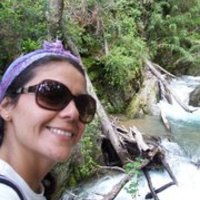
Rocio Blanco
Related Authors
Nerissa Russell
Cornell University
Marta Diaz-Guardamino
Durham University
Henry Tantaleán
Universidad Nacional Mayor de San Marcos
Armando Marques-Guedes
UNL - New University of Lisbon
Iain Davidson
University of New England - Australia
Enrico Cirelli
Università di Bologna
Ramiro Barberena
National Scientific and Technical Research Council
Gary Feinman
Field Museum
Johan Ling
University of Gothenburg
Andrew Wilson
University of Oxford
InterestsView All (10)
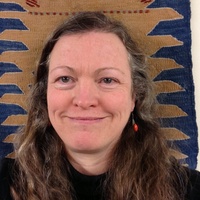
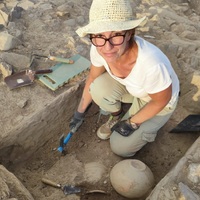
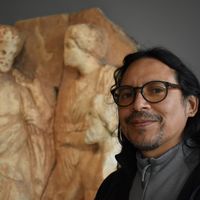






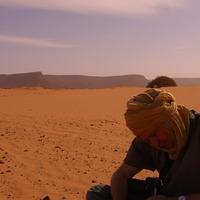
Uploads
Papers by Rocio Blanco
Argentinian Patagonia). Firstly the painting mixtures were tested, considering materials and proportions. Secondly these
mixtures were used to produce the replicas: mainly hand stencils and dotted motifs which were recorded in different sites from the
locality. It is concluded that the experimental studies allow to consider in great detail those issues related to the production of these
images, especially regarding the producers’ position and work, and the raw materials and artefacts which were used.
the individuals represented in the hand stencils continues to be difficult. The present work approaches this problem through the
measurements of a sample of stencils from the northeastern portion of the Deseado Massif (Santa Cruz province, Argentina), the
evaluation of the available bioantropological information from Patagonian human populations, and the use of an experimental
approach that includes the replication of hand stencils from individuals of different ages and sexes. It is proposed that the sizes of
the hand stencils are not only related to the age and sex of the individuals but are also conditioned by the production techniques.
The results include the definition of new parameters for male’ and female’ hand sizes and the introduction of a correction value for
the error which is caused by the stenciling techniques. It is concluded that the production of hand stencils in this part of Patagonia
was a shared activity that was not limited to specific social subgroups.
Capítulo del libro "Palaeoart and Materiality The Scientific Study of Rock Art", editado por R. Bednarik, D. Fiore, M. Basile, G. Kumar y T. Huisheng
de la Meseta de Somuncurá tiene una continuidad
de 10 años. Las tareas de campo incluyeron
prospecciones sistemáticas, sondeos y excavaciones,
relevamientos de sitios con arte rupestre
así como el geoposicionamiento de diferentes
fuentes de materias primas líticas y distintas
estructuras de piedra. Entre las tareas de gabinete
se incluyeron la aplicación de SIG, revisión
de fuentes etnográficas, análisis geoquímicos,
zooarqueológicos, tecno-morfológicos y radiocarbónicos.
Esta información nos permite tener
un panorama más acabado de las características
básicas del poblamiento humano en dos sectores
de esta altiplanicie: el sector oriental y el
sector central. En tal sentido, se propone que en
el sector central las ocupaciones iniciales habrían
tenido lugar a partir de la transición Pleistoceno-
Holoceno. Asimismo, la abundancia de
sitios y los fechados radiocarbónicos obtenidos
posicionan a numerosas ocupaciones hacia el
Holoceno tardío hasta momentos del contacto
hispano-indígena. La información generada hasta
el momento nos permite responder en parte
nuestros interrogantes iniciales: ¿Desde cuándo
está ocupado este espacio patagónico? y ¿cómo
los cazadores-recolectores fueron convirtiendo
al vasto espacio mesetario en paisaje significado
socialmente?
new environments during the initial colonization of America. We consider theoretical elements
from archaeology and other fields of study, in order to frame the processes that human groups
face when migrating and adapting to uninhabited territory. These landscapes with no history
were transformed into social landscapes through practices developed over time. From the
perspective of environmental learning, we have analyzed archaeological sites in the Argentine
Patagonia indicating human occupations from the Pleistocene-Holocene transition and the Early
Holocene era, in order to provide data regarding the modes and times of environmental learning,
as well as the materiality and distribution of the first settlements in unknown terrain.
portion of the Deseado Massif (Santa Cruz province, Argentina). The analyzed materials include
samples recovered from the archaeological layers of Cueva Maripe, small fragments of rock
paintings extracted from different sections of the same cave, and ochers collected from outcrops
at short (< 10 km) and long (> 50 km) distances from this archaeological site. The obtained
results contribute to a preliminary characterization of the samples. A potential mineral source
for red pigments, placed at a short distance from the cave, is suggested. The continuation of these
studies, combined with other analyses, will deepen the knowledge of the raw materials which were
employed for the preparation of the paint mixtures, the location of other mineral sources and the
temporal contextualization of the production of rock art at Cueva Maripe.
de tres localidades con arte rupestre asociadas
a lagunas en el sector oriental de la meseta de
Somuncurá: Laguna La Maciega, Laguna Azul y El
Ganso. Esta información se inserta, posteriormente, en
un contexto regional, considerando una amplia diversidad
de sitios con manifestaciones rupestres ubicados
sobre esta altiplanicie y en sus inmediaciones. Los resultados
obtenidos en una escala mesorregional señalan
una alta diversidad de motivos y técnicas que se
acentúa en Laguna La Maciega. Esta diversidad, junto
con el análisis de las pátinas, sugiere la posibilidad
de usos recurrentes de las mencionadas cuencas. La
evaluación de los contextos arqueológicos asociados
al arte rupestre en Nordpatagonia permite enmarcar a
la circulación de estas imágenes en la dinámica social
del Holoceno tardío.
Books by Rocio Blanco
Argentinian Patagonia). Firstly the painting mixtures were tested, considering materials and proportions. Secondly these
mixtures were used to produce the replicas: mainly hand stencils and dotted motifs which were recorded in different sites from the
locality. It is concluded that the experimental studies allow to consider in great detail those issues related to the production of these
images, especially regarding the producers’ position and work, and the raw materials and artefacts which were used.
the individuals represented in the hand stencils continues to be difficult. The present work approaches this problem through the
measurements of a sample of stencils from the northeastern portion of the Deseado Massif (Santa Cruz province, Argentina), the
evaluation of the available bioantropological information from Patagonian human populations, and the use of an experimental
approach that includes the replication of hand stencils from individuals of different ages and sexes. It is proposed that the sizes of
the hand stencils are not only related to the age and sex of the individuals but are also conditioned by the production techniques.
The results include the definition of new parameters for male’ and female’ hand sizes and the introduction of a correction value for
the error which is caused by the stenciling techniques. It is concluded that the production of hand stencils in this part of Patagonia
was a shared activity that was not limited to specific social subgroups.
Capítulo del libro "Palaeoart and Materiality The Scientific Study of Rock Art", editado por R. Bednarik, D. Fiore, M. Basile, G. Kumar y T. Huisheng
de la Meseta de Somuncurá tiene una continuidad
de 10 años. Las tareas de campo incluyeron
prospecciones sistemáticas, sondeos y excavaciones,
relevamientos de sitios con arte rupestre
así como el geoposicionamiento de diferentes
fuentes de materias primas líticas y distintas
estructuras de piedra. Entre las tareas de gabinete
se incluyeron la aplicación de SIG, revisión
de fuentes etnográficas, análisis geoquímicos,
zooarqueológicos, tecno-morfológicos y radiocarbónicos.
Esta información nos permite tener
un panorama más acabado de las características
básicas del poblamiento humano en dos sectores
de esta altiplanicie: el sector oriental y el
sector central. En tal sentido, se propone que en
el sector central las ocupaciones iniciales habrían
tenido lugar a partir de la transición Pleistoceno-
Holoceno. Asimismo, la abundancia de
sitios y los fechados radiocarbónicos obtenidos
posicionan a numerosas ocupaciones hacia el
Holoceno tardío hasta momentos del contacto
hispano-indígena. La información generada hasta
el momento nos permite responder en parte
nuestros interrogantes iniciales: ¿Desde cuándo
está ocupado este espacio patagónico? y ¿cómo
los cazadores-recolectores fueron convirtiendo
al vasto espacio mesetario en paisaje significado
socialmente?
new environments during the initial colonization of America. We consider theoretical elements
from archaeology and other fields of study, in order to frame the processes that human groups
face when migrating and adapting to uninhabited territory. These landscapes with no history
were transformed into social landscapes through practices developed over time. From the
perspective of environmental learning, we have analyzed archaeological sites in the Argentine
Patagonia indicating human occupations from the Pleistocene-Holocene transition and the Early
Holocene era, in order to provide data regarding the modes and times of environmental learning,
as well as the materiality and distribution of the first settlements in unknown terrain.
portion of the Deseado Massif (Santa Cruz province, Argentina). The analyzed materials include
samples recovered from the archaeological layers of Cueva Maripe, small fragments of rock
paintings extracted from different sections of the same cave, and ochers collected from outcrops
at short (< 10 km) and long (> 50 km) distances from this archaeological site. The obtained
results contribute to a preliminary characterization of the samples. A potential mineral source
for red pigments, placed at a short distance from the cave, is suggested. The continuation of these
studies, combined with other analyses, will deepen the knowledge of the raw materials which were
employed for the preparation of the paint mixtures, the location of other mineral sources and the
temporal contextualization of the production of rock art at Cueva Maripe.
de tres localidades con arte rupestre asociadas
a lagunas en el sector oriental de la meseta de
Somuncurá: Laguna La Maciega, Laguna Azul y El
Ganso. Esta información se inserta, posteriormente, en
un contexto regional, considerando una amplia diversidad
de sitios con manifestaciones rupestres ubicados
sobre esta altiplanicie y en sus inmediaciones. Los resultados
obtenidos en una escala mesorregional señalan
una alta diversidad de motivos y técnicas que se
acentúa en Laguna La Maciega. Esta diversidad, junto
con el análisis de las pátinas, sugiere la posibilidad
de usos recurrentes de las mencionadas cuencas. La
evaluación de los contextos arqueológicos asociados
al arte rupestre en Nordpatagonia permite enmarcar a
la circulación de estas imágenes en la dinámica social
del Holoceno tardío.